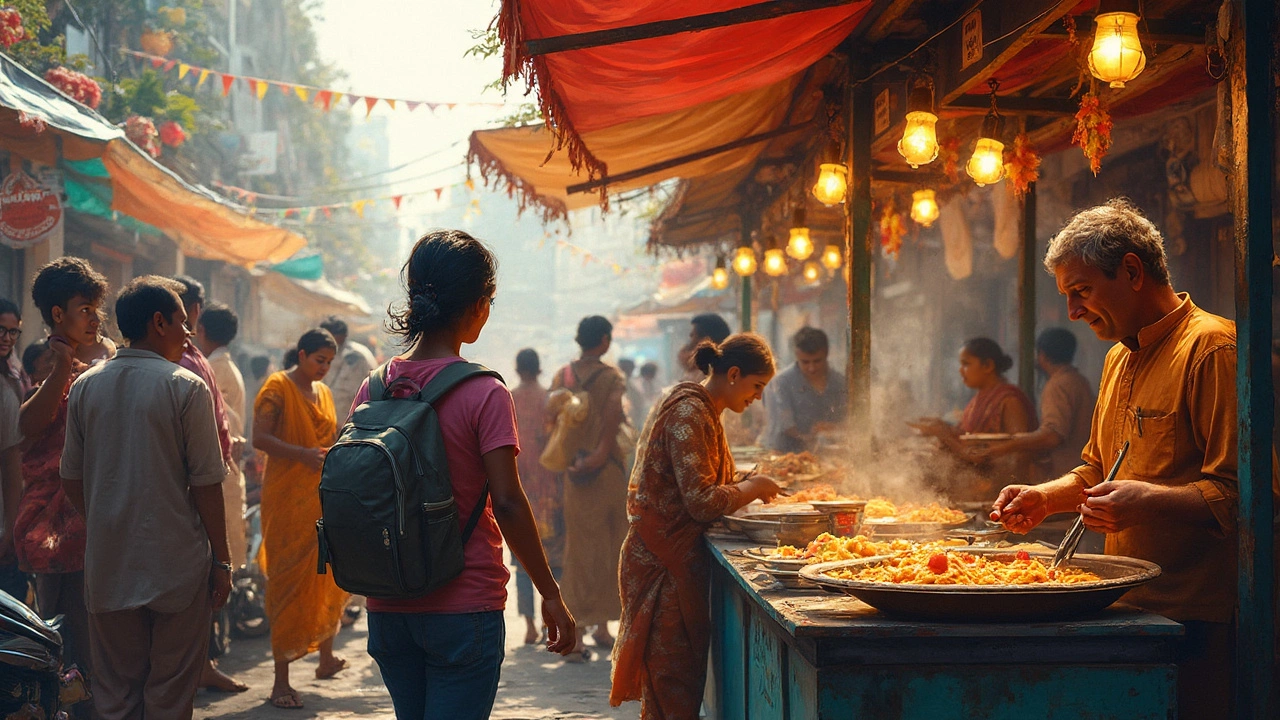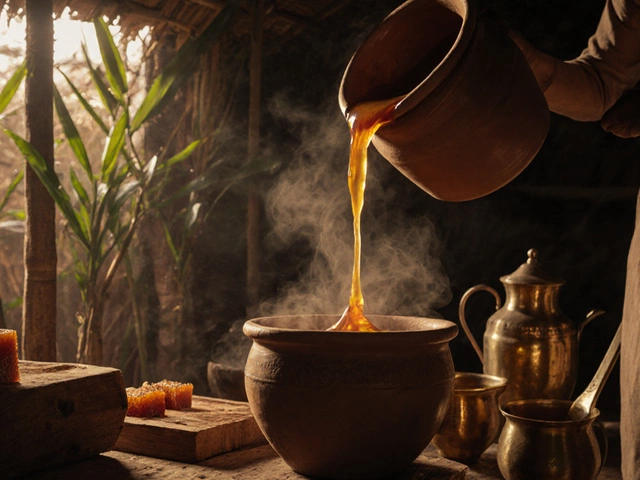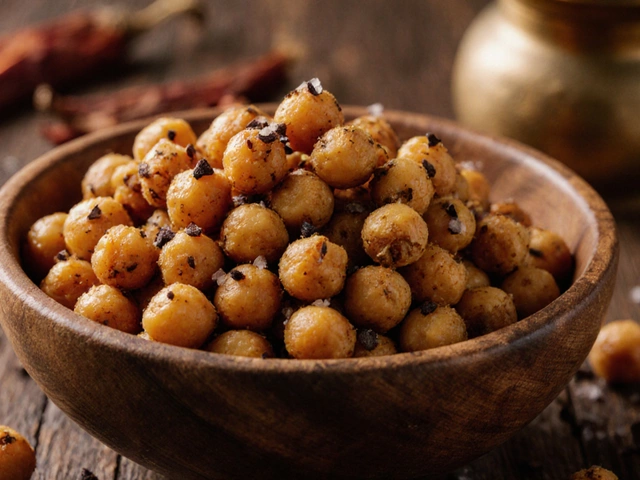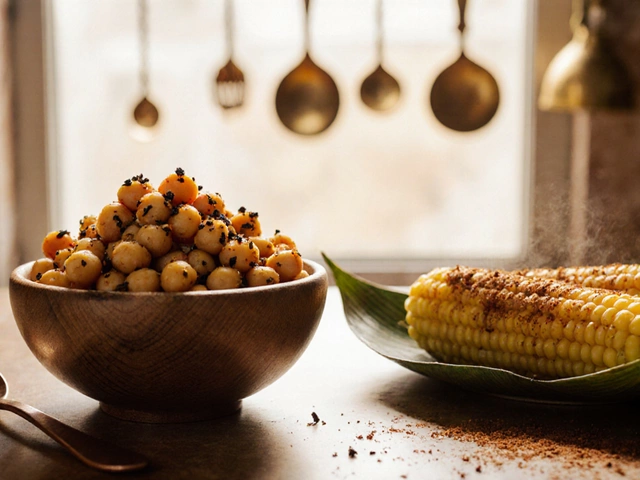Is it true that so many people in India are vegetarian? Yes, and not in a trendy way, but as a deeply rooted habit. Walk into a local Indian restaurant—half the menu is plant-based, and sometimes, you won’t even spot a single meat dish unless you look hard.
This isn’t just about taste. India’s love for vegetarian food comes from a mix of religion, tradition, and clever use of local ingredients. You’ll find families who’ve never cooked meat in their lives, and whole cities where butchers close shop for religious festivals. Even big fast food chains in India roll out entire vegetarian menus that taste nothing like what you find anywhere else in the world.
But don’t assume all Indian food is vegetarian. Some regions cook with lots of seafood and meat. Still, there’s no country whose cuisine can work magic with veggies the way India can. Why? Let’s break down what’s really going on behind India’s mostly veg plates.
- How Common is Vegetarianism in India?
- A Quick Dive into the Roots: Religion and Tradition
- Everyday Veggie Staples: What's Actually on the Plate?
- Classic Indian Vegetarian Dishes Worth Trying
- Surprising Facts: Myths vs. Reality
- Tips for Enjoying Indian Vegetarian Food Anywhere
How Common is Vegetarianism in India?
For a country as huge and diverse as India, sticking to veggies is surprisingly normal. If you grew up outside India, you might think almost everyone there is vegetarian. It’s not quite that extreme, but it’s closer than most places. Government surveys from 2021 say around 30% of Indians eat a vegetarian diet—meaning no meat, fish, or eggs. In some states like Rajasthan and Gujarat, it jumps to almost 75%. Walk through any city in these places and you’ll see more veggie restaurants than anywhere else.
| Region/State | Percent Vegetarian |
|---|---|
| Rajasthan | 74% |
| Gujarat | 69% |
| Punjab | 66% |
| Uttar Pradesh | 51% |
| Kerala | 3% |
But there’s a flip side. In states like Kerala, Bengal, or Assam, most folks love their fish and meat. So, India isn’t one massive vegetarian club, but it’s still the country with the India vegetarian culture built right into daily life. Plus, lots of meat-eaters still eat plant-based food most of the week because of fasting, family traditions, or just to save money.
Even big cities have entire food zones where you’ll spot signs saying “pure veg.” And festivals or special days dedicated to not eating meat are a real thing—cafes and restaurants often go vegetarian-only for those days. Between all these reasons, it’s no wonder so many Indians stick to vegetables by choice or routine.
A Quick Dive into the Roots: Religion and Tradition
For most people, eating habits come from family and culture. In India, the drive behind vegetarian food is all about deep-rooted beliefs. If you look at the numbers, a huge part of the population follows India vegetarian customs because of religion.
Hinduism, which is followed by over 75% of Indian people, looks at cows as sacred and talks about ahimsa, or non-violence. This belief doesn’t just stop at people; it covers animals too. Many Hindus avoid beef at all costs, and a lot skip meat and eggs altogether. Jains, who make up a small but influential group, go even further. They won’t eat anything that kills a living thing—not even onions or garlic. Buddhists in India also tend to lean veg, inspired by teachings about kindness to all creatures. Meanwhile, some Indian Christians and Muslims eat meat, but the plants-first habit is strong in society thanks to these older traditions.
This isn’t just about what you ‘should’ eat on religious days. It shapes daily life. Weddings, festivals, and community events often feature full vegetarian feasts. Some entire states in India such as Gujarat, Rajasthan, and parts of Uttar Pradesh keep their public spaces—like schools and even some hotels—strictly vegetarian by law or tradition.
| Religion/Community | Typical Dietary Rule | Percent Following Vegetarian Diet |
|---|---|---|
| Hindu | No beef, many are fully vegetarian | ~44% |
| Jain | Strict vegetarian, no root vegetables | >90% |
| Buddhist | Many are vegetarian | ~35% |
| Muslim | No pork, not usually vegetarian | <5% |
Alongside religion, tradition is a big deal. Even families with no strict rules might stick to vegetarian food simply because it’s how grandma cooked and the neighbors eat. It’s part of building community and sharing food across generations. That’s why the plant-based trend in India isn’t new—it’s part of daily life, stitched right into the culture around the dining table.
Everyday Veggie Staples: What's Actually on the Plate?
When it comes to daily meals, Indian vegetarian food is all about variety and balance. The typical plate doesn’t just pile on veggies—it mixes grains, legumes, dairy, and tons of flavor. This means you won’t get bored, and you won’t miss out on key nutrients either.
A common home-cooked meal starts with rice or roti (Indian flatbread). Both show up almost every day—some households even have both on the table. Add to this a dal, which is a soupy lentil dish cooked in almost every region but with different spices and tweaks. Lentils are cheap, packed with protein, and super filling, making them a real backbone for vegetarian eating in India.
Now for the veggies: think spiced potatoes, cauliflower, okra, eggplant, beans, peas, and more. You’ll see these cooked as dry stir-fries (sabzi), curries with gravy, or even mashed into spicy snacks. And don’t forget paneer. It’s a fresh cheese, kind of like firm tofu but from milk, and it soaks up flavor in curries, grilled dishes, or fried snacks.
Dairy pops up everywhere—yogurt, buttermilk, ghee (clarified butter)—adding richness and helping with digestion. For pickles and chutneys, the punchy flavors turn every meal exciting and make simple rice and dal taste like a feast.
- India vegetarian meals are often totally plant-based, but you’ll spot eggs and onions in some regions, while others leave them out for religious reasons.
- Breakfast might be upma (a savory semolina dish), poha (flattened rice cooked with veggies), or idli and dosa (steamed or crispy rice-lentil pancakes), all loaded with fiber and flavor.
- Legumes beyond lentils—like chickpeas, kidney beans, or black-eyed peas—make hearty stews known as chana masala, rajma, or lobia.
- Side salads are simple: onions, cucumbers, and carrots, with just lemon juice and salt.
If you’re curious about eating like an Indian vegetarian, stock up on lentils, rice, spices, and some seasonal vegetables. That’s the heart of everyday cooking—affordable, filling, and packed with taste.

Classic Indian Vegetarian Dishes Worth Trying
Trying Indian vegetarian food for the first time can be overwhelming because there’s just so much to choose from. But there’s a reason these dishes keep getting ordered again and again. They’re full of flavor, don’t need fancy ingredients, and pack a punch when it comes to nutrition. Here are some favorites every beginner should know about:
- Paneer Butter Masala: Paneer (Indian cottage cheese) cooked in a creamy tomato-based sauce, usually paired with naan or rice. Even hard-core meat lovers tend to reach for seconds.
- Chana Masala: Chickpeas simmered in a spicy, tangy gravy. This is a staple across North India and a top choice for quick protein.
- Masoor Dal: Red lentils cooked with turmeric, tomatoes, and spices. It’s simple and cheap but tastes rich and comforting.
- Baingan Bharta: Smoky-flavored mashed eggplant sautéed with onions, tomatoes, and lots of garlic. It’s nothing like bland cafeteria eggplant.
- Dosa with Sambar: Thin rice pancakes eaten with a chunky lentil soup and coconut chutney. South Indians eat this any time—breakfast, lunch, or even a midnight snack.
- Aloo Gobi: Potatoes and cauliflower cooked together with turmeric and spices. This dish makes veggies taste so good, you’ll forget you’re eating them because they’re “healthy.”
If you’re wondering what makes these dishes so special, it’s the use of spices over heavy sauces or cheese (which is usually the default in Western vegetarian food). The trick is layering flavors—cumin, coriander, turmeric, garam masala—so even basic vegetables or lentils taste like a treat.
Here’s a quick look at the most commonly used ingredients in Indian vegetarian dishes:
| Ingredient | Why It's Used |
|---|---|
| Lentils | Main protein source, easy to cook, cost-effective |
| Paneer | No rennet, suits vegetarians, absorbs flavors well |
| Chickpeas | High in protein and fiber, works with many different spices |
| Cauliflower & Potatoes | Affordable, always available, soak up spices |
| Eggplant | Adds smoky flavor, goes well in curries |
| Rice | Main carb, filling and adaptable with curries |
| Spices | Replace the need for heavy sauces and cheese |
A typical North Indian meal will have dal, sabzi (vegetable dish), roti (flatbread), and maybe a bit of rice. Down South, you’ll run into dosas, idli, sambar, and all kinds of coconut-based curries. You won’t need fancy kitchen gear or cooking experience to try making these at home—all you need are the right spices and a bit of patience. Try starting with chana masala if you want a one-pot wonder. If you want something richer, paneer butter masala is your answer. Either way, these classic dishes prove how good vegetarian food can taste, no meat needed.
Surprising Facts: Myths vs. Reality
So, you’ve heard India is the most vegetarian country. But the reality? Only about a third of Indians actually identify as fully vegetarian. It’s still a huge number, but walking down any street, you’ll find meat and fish on plenty of menus—just nowhere near as much as veggies.
One big myth is that most Indians avoid meat for health. That’s not the full story. Religion and tradition are the main drivers. Communities linked to Hinduism and Jainism tend to avoid meat because of beliefs about non-violence and purity. But there’s no single reason, and not everyone sticks to strict rules. For example, in Kerala and West Bengal, fish is a massive part of daily meals.
There’s also a weird belief that most Indian food is spicy and vegetarian. Actually, spice levels depend a lot on the region. North Indian veg food can be mild, while southern and western dishes pack a punch. And yes, plenty of people eat eggs even if they call themselves vegetarian (often called “eggetarian”).
- Roughly 30-39% of Indians say they are strictly vegetarian, according to a 2021 National Family Health Survey.
- India’s vegetarian population is bigger than the entire population of the U.S.—that’s over 400 million people.
- “Vegetarian” doesn’t always mean no animal products—dairy is a staple, and eggs are a gray area.
- Major fast food chains like McDonald’s and Domino’s have separate kitchens and menus just for India vegetarian customers.
| Region | % Reported Vegetarian | Common Non-Veg Foods |
|---|---|---|
| Rajasthan | ~75% | Rarely served; mostly dairy-based |
| Punjab | ~60% | Chicken, fish (on special occasions) |
| Kerala | <10% | Fish, seafood, beef |
| West Bengal | <5% | Fish, mutton |
So, next time someone says India is all about vegetarian food, you’ll know there’s more to the story. It’s a mix of culture, beliefs, family habits, and just good old flavor. And honestly, the real surprise is how creative Indian cooks get with plants, dairy, and spices, whether everyone at the table eats meat or not.
Tips for Enjoying Indian Vegetarian Food Anywhere
Don’t have a local Indian restaurant on your block? No worries. Getting into Indian vegetarian food is totally doable anywhere—whether you’re eating out, cooking at home, or getting takeout. Here’s how you can start, without feeling lost or overwhelmed.
- India vegetarian menus are huge: Even small Indian restaurants often split the menu in half—veg on one side, everything else on the other. If you see dishes with a green dot next to them, that means 100% vegetarian. Easy shortcut.
- Go for thali: This is a big plate with a bit of everything—rice, breads (like roti or naan), chutney, dal, curry, and sometimes a sweet. It’s the best way to try multiple flavors without guessing.
- Start with crowd-pleasers: Dishes like chana masala (chickpeas), palak paneer (spinach and cheese), aloo gobi (potato and cauliflower), and samosas are everywhere. Ask for mild if you aren't sure about spice.
- If you’re cooking, get the right spices: Cumin, coriander, turmeric, and garam masala will cover most basic recipes. Lentils (dal) and chickpeas are good pantry starters—they’re cheap and filling.
- Restaurant menus use the word "paneer" a lot—it’s just a fresh cheese, a kind of Indian tofu. Try dishes with it, like paneer tikka or matar paneer (peas and paneer).
- Meal delivery apps now handle Indian food in most big cities. You can usually filter by order type (“vegetarian only”) in the search options.
Here’s one fast fact: according to a 2021 report by Pew Research, about 39% of Indian adults say they don’t eat meat at all. That’s millions more vegetarians than any other country.
| Country | % of Adults Vegetarian | Common Veg Dishes |
|---|---|---|
| India | ~39% | Dal, Chana Masala, Palak Paneer |
| US | ~5% | Salads, Veg Burgers |
| UK | ~7% | Lentil Soup, Veg Pies |
One cool trick: If you’re at an Indian buffet, pile on the colorful stuff. The reds, greens, and yellows usually mean lots of veggies and flavor. And if you’re unsure about what’s in something, just ask—they’re used to questions and usually super helpful.
Trying Indian vegetarian food is about variety. Use these steps, keep your spice levels comfortable, and you can eat like you’re in Mumbai or Chennai—no plane ticket needed.





